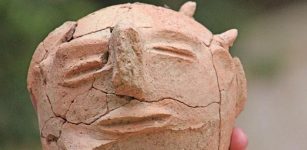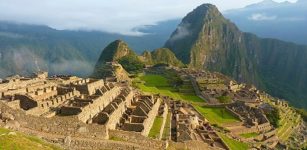Buddha Statues With Broken Arms, Legs And Without Heads Unearthed In Angkor Wat, Cambodia
Conny Waters - AncientPages.com - The Apsara Authority archaeologists have unearthed 141 statue fragments in Siem Reap province’s Angkor Wat, Cambodia.
The artifacts were discovered accidentally by the experts implementing an irrigation system management project in the area.
 Twenty-one broken Buddha statues were unearthed by Aspara National Authority (ANA) archaeological experts in the Angkor Wat Temple complex. ANA
Twenty-one broken Buddha statues were unearthed by Aspara National Authority (ANA) archaeological experts in the Angkor Wat Temple complex. ANA
The statue fragments of Buddha figurines are equivalent to 21 whole statues, although no heads have been found), reports The Khmer Times.
“The statues were buried and mixed up with some modern items, including metal door frame, glass shrapnel, bicycle bell, and rim and even plastic bags. So, the statues were probably buried around the ‘60s or ‘70s,” said Mr. Srun Tech, manager of the Apsara Authority.
The statues found were mostly broken; prompting the archaeologists to suspect the missing parts could have been buried deeper.
It also means that the statues were buried intentionally to avoid being detected by other people.
“The recent discovery underscores the fact that the Angkor Wat is still an important target for further research,” he said.
The excavation works will continue to be carried out and further studies on the excavated statues will also be continued to clearly establish the purpose behind the burying of the Buddha statues, when exactly it happened, and when they were made.
 Apsara authorities uncover remnants of Buddha statues. Apsara Authority
Apsara authorities uncover remnants of Buddha statues. Apsara Authority
The Phnom Penh Post writes that the statues were buried in the same pit and were of different sizes, according to Im Sokrithy, the deputy director at Angkor International Research and Documentation Centre.
Sokrithy added that “this accidental discovery happened April 11. What we found were mostly Buddha statues, some of which had broken heads, arms, legs, and other pieces. These statues are of Buddha sitting as well as standing.
“There is soil, mixed with modern remnants, meaning that they were probably buried in the 1960s or 1970s because we found fragments of a bicycle bell, a plastic bag, and other materials. These statues were not buried in ancient times,” he said.
In late March, the Apsara Authority’s working team also discovered a wooden structure of more than 1,000 years of age and a Ganesh statue in the middle of the Angkor Wat temple’s northern pond while experts were restoring the pond.
Written by Conny Waters - AncientPages.com Staff Writer




















